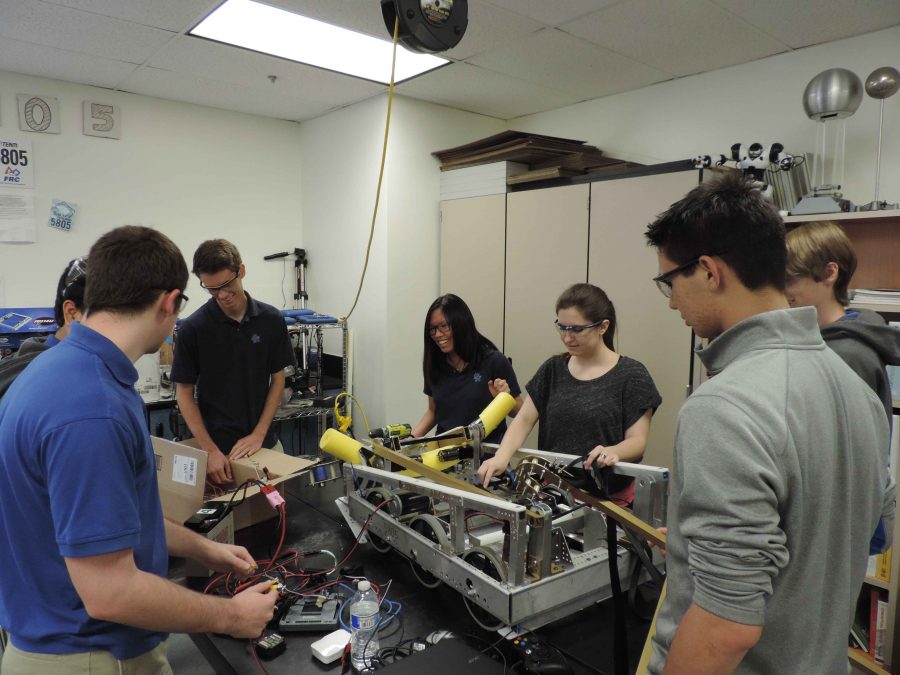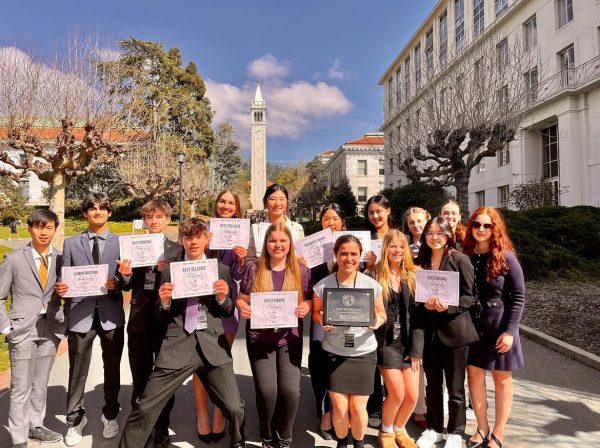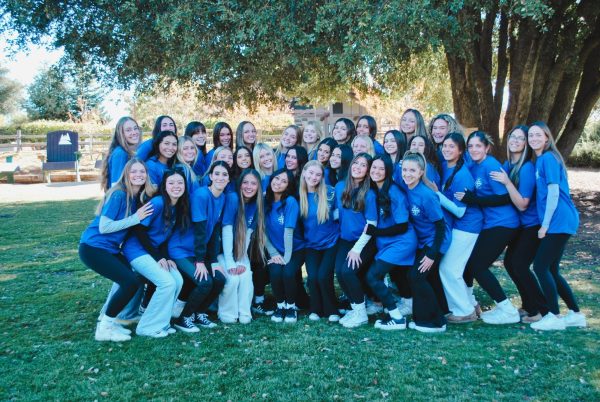Robo-World
The SMCHS Robotics Team travels to St. Louis, Missouri for the Robotics World Championships April 28 to May 1.
The robotics team spends countless hours building a robot from scratch so that it can defeat the opponents and win them the gold.
Arguably the most competitive, memorable robotics competition was between Zoey Brooks and the computer geeks, in season 2 episode 8 of Zoey 101. The competition was fierce with two robots going head to head until there was one robot standing. Little did they know, Quinn Pensky, a science brainiac and Zoey’s friend, built a robot of her own and destroyed the computer geeks’ robot in one blast.
The SMCHS Robotics Team does things a bit differently from Zoey and her friends. The goal is to build a robot that will defeat all of the opponent’s robots, which is exactly what the team intends to do at the Robotics World Championships in April 29 and 30.
The Robotics World Championships is based on the theme “stronghold.” The theme was chosen by the founders of First Robotics – the program that puts on the competition and robotics classes worldwide – Dean Kaman and Woody Flowers. The aim is to pass the opponent’s’ defenses and knock their tower down by throwing boulders and balls into it.
The competition hosts about 6,000 high school teams across the world, the majority from the United States, but overseas participation has grown substantially in the last five to ten years.
“There’s a lot of teams in Europe such as Turkey, Australia, and China, so when it says worldwide competition, it really is a worldwide competition. There will be about 600 teams at Worlds,” said Jason Lawrence, physics teacher and Robotics Team advisor.
The competition is a three day event. The first day gives teams time to set up their workspace, put on any additions to their robot, pass inspection, and do any necessary practice rounds. The second day is the qualification round, where they will compete roughly 15 times against different teams in their division. The third and final days are the championships, where the top eight teams compete for the win.
“You’re randomly put with two other teams in the competition and you go up against another team of three robots,” said senior Mac Dalphy. “You score points in different ways, this year you score points by going under or over different ‘defenses’ which are just obstacles meant to get you stuck. You can also score by shooting a ball into a goal that’s about 6 and a half feet off the ground or by pushing a ball into a goal on the ground. if you cross 4 of the 5 defenses, then you get extra points and whichever team has the most points at the end wins.”
Robotics combines physics, engineering, business communication and many other real world applications that are seen throughout the competitions.
“Any idea, whether it be a robot, project or goal, being able to break it down into achievable steps and work towards a tangible product is valuable to everyone,” said senior Jennifer Tran. “Much of the process was setting smaller goals to achieve the bigger one, a process that is applicable in any situation.”
When the theme came out in January, the team was given six weeks to design, build and perfect a robot it had to compete against 100 other teams in the division.
“You can consider it a sport for the mind,” Lawrence said. “Once you build that robot, the games can be fairly complex, and there’s many different ways to play the game. The main thing to figure out is how you want to play the game and then you want to design a robot that achieves that.”
The building of the robot is one of the most difficult parts of the process, but is isn’t the hardest part. The team has to fundraise, strategize, and collaborate with other teams as well as keep a budget of 50,000 dollars a year. The SMCHS team has to fund raise enough money to go to various competitions and build championship robots.
“I would say about 50 percent of what is done is about the robot,” Lawrence said. “The rest is about business practices, engineering practices, social aspects of working with other people, conflict management and things that will translate into any job opportunity in the future.”
Learning the equations for physics and other sciences is one thing, but applying them to real life situations is much more difficult and brings about more aspects than just simple computation and building.
“You have to use a lot of critical thinking and come up with your own fix for whatever problem you’re having,” Dalphy said. “Odds are no one has had that specific problem before, and you’re probably the first person to have to figure out how to make it work.”
The founders of First Robotics intended the program to help young students collaborate and become prepared for the real world. The World Championships is a highly competitive competition, but the knowledge and understanding that is acquired through participation is the real win in the eyes of the founders.
“You have to learn how to work cohesively as a team to accomplish tasks,” said senior Alex Estrada. “The overall success of the team takes a group effort, not a single person.”
On the video announcing the theme for the World Competition, the founders said that “the purpose of technology is always to improve the lives of people.” This idea is applicable for robotics since the purpose of innovation and technology is to improve society, which is why there is such an emphasis on collaboration and gracious professionalism.
“We can never lose sight of that, so we have to promote positive relationships among young people and high schoolers,” Lawrence said. “There’s a whole lot more to it than building a robot. I can teach students physics, but robotics is where they can apply physics and work as a team.”







